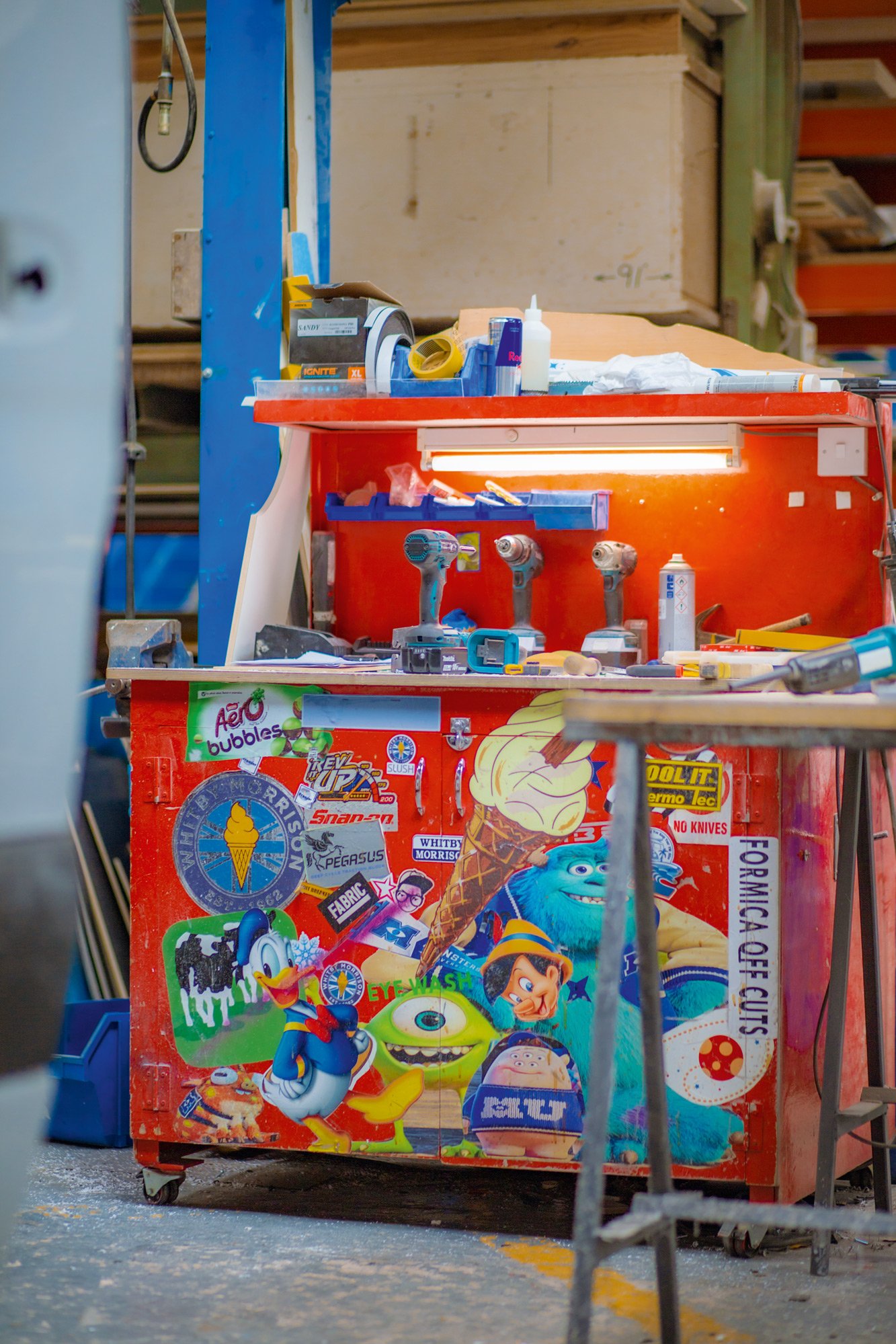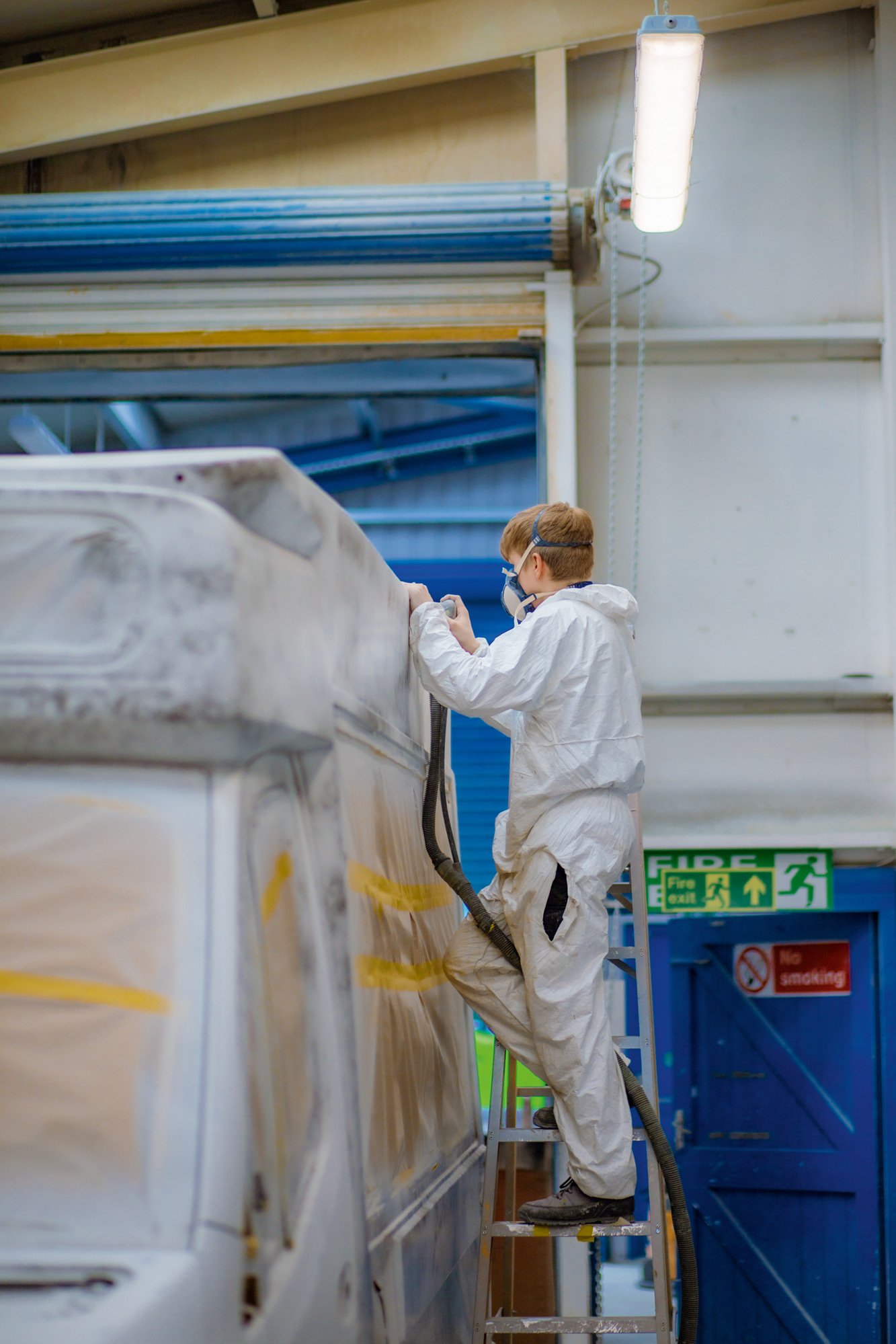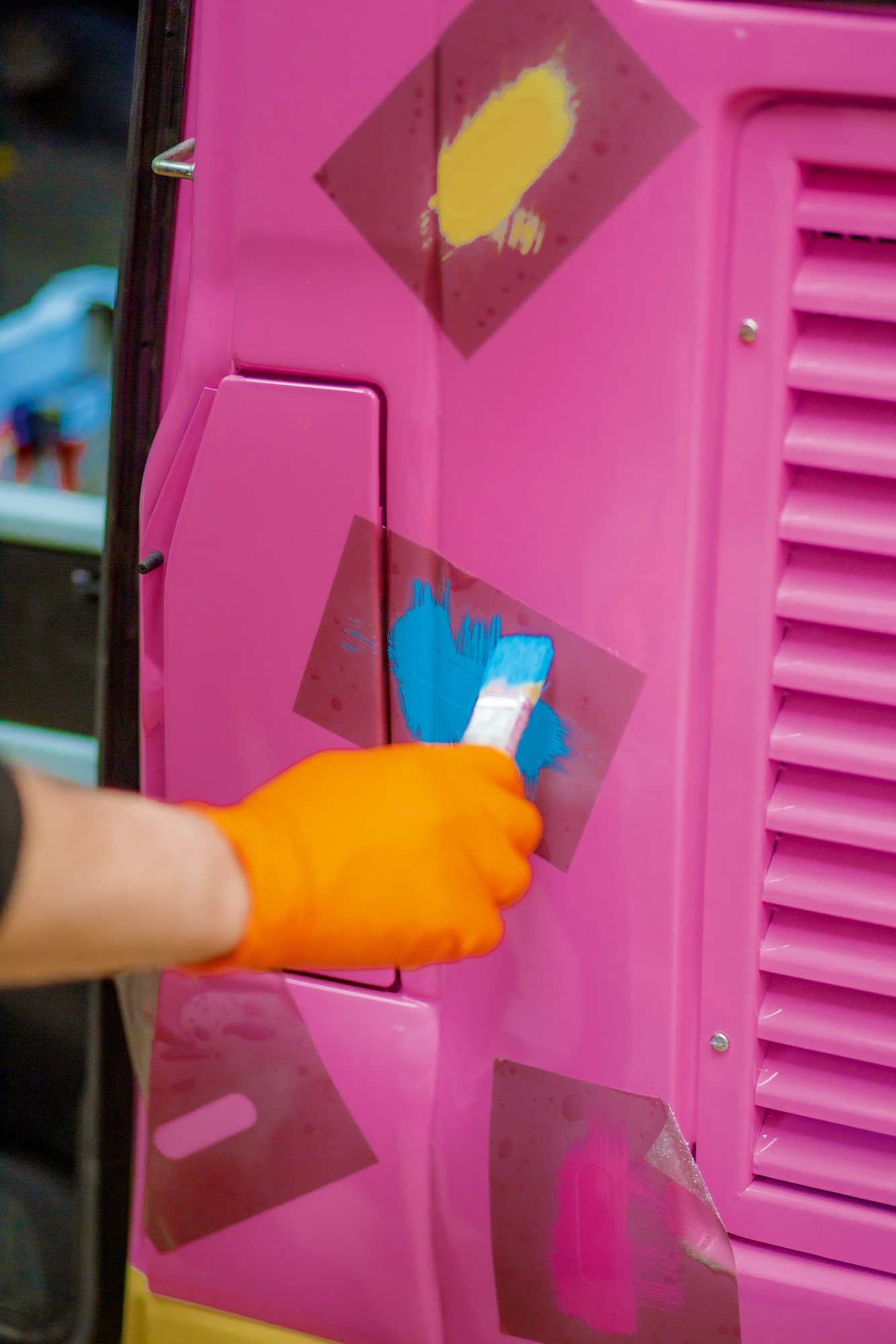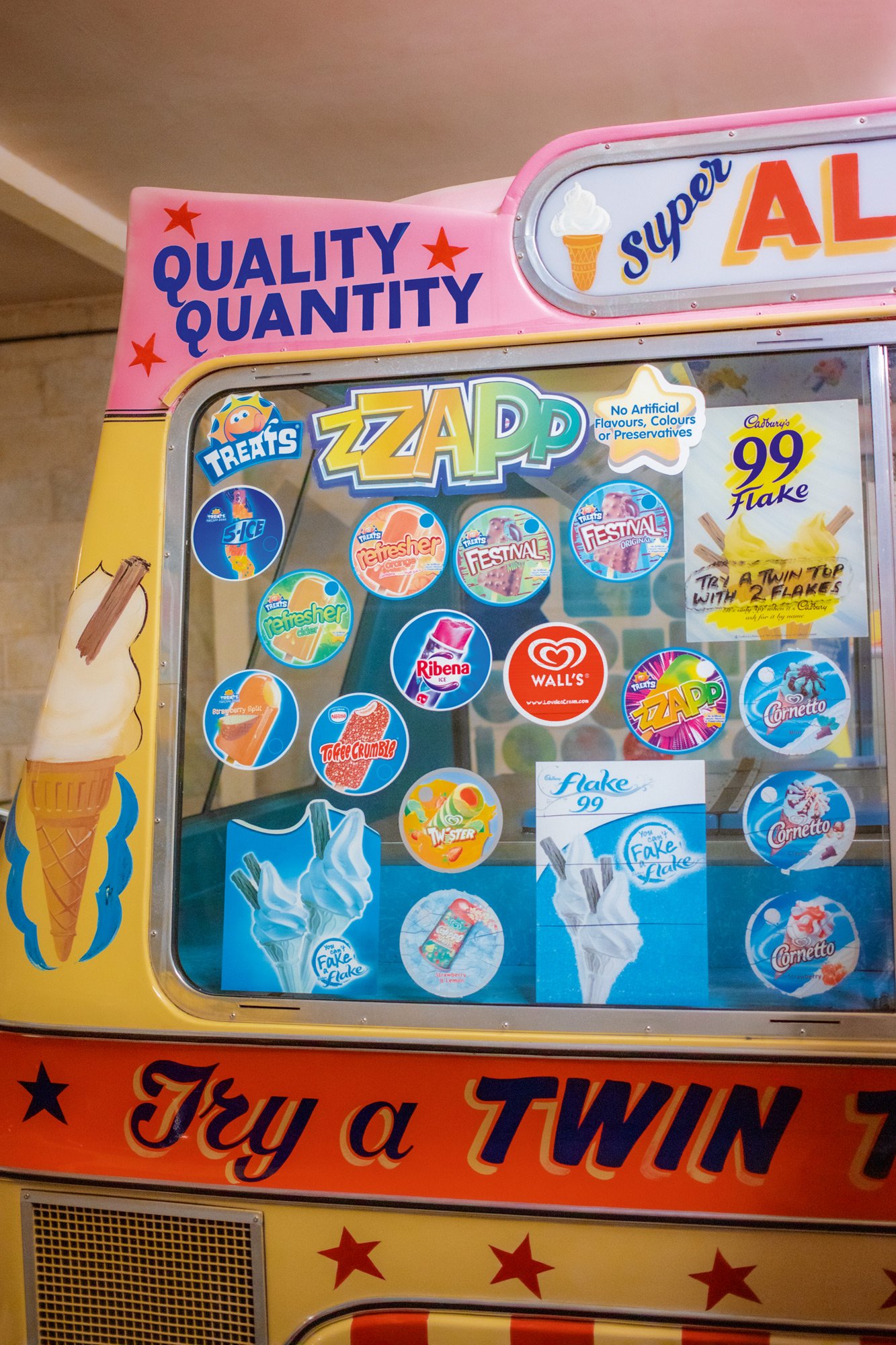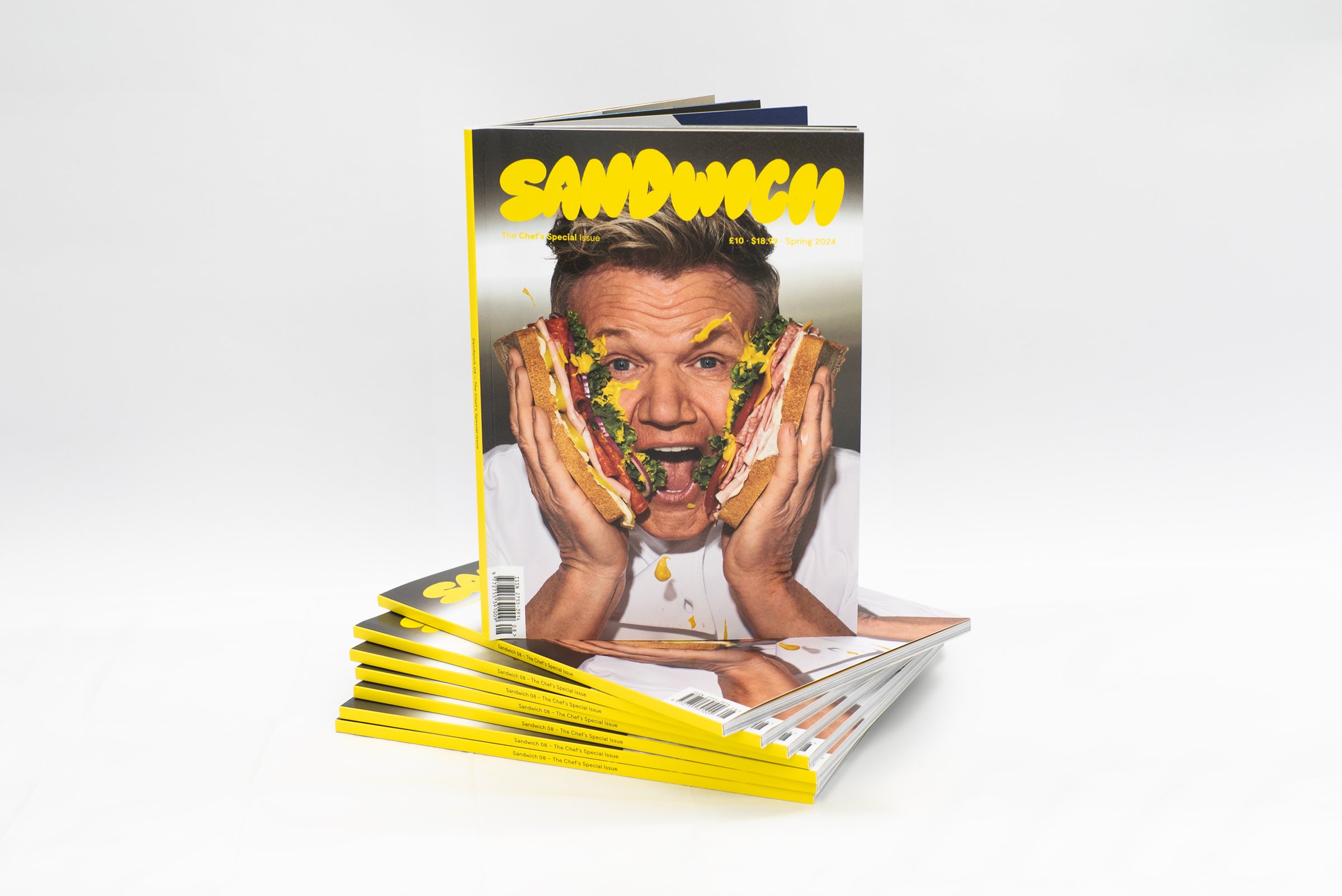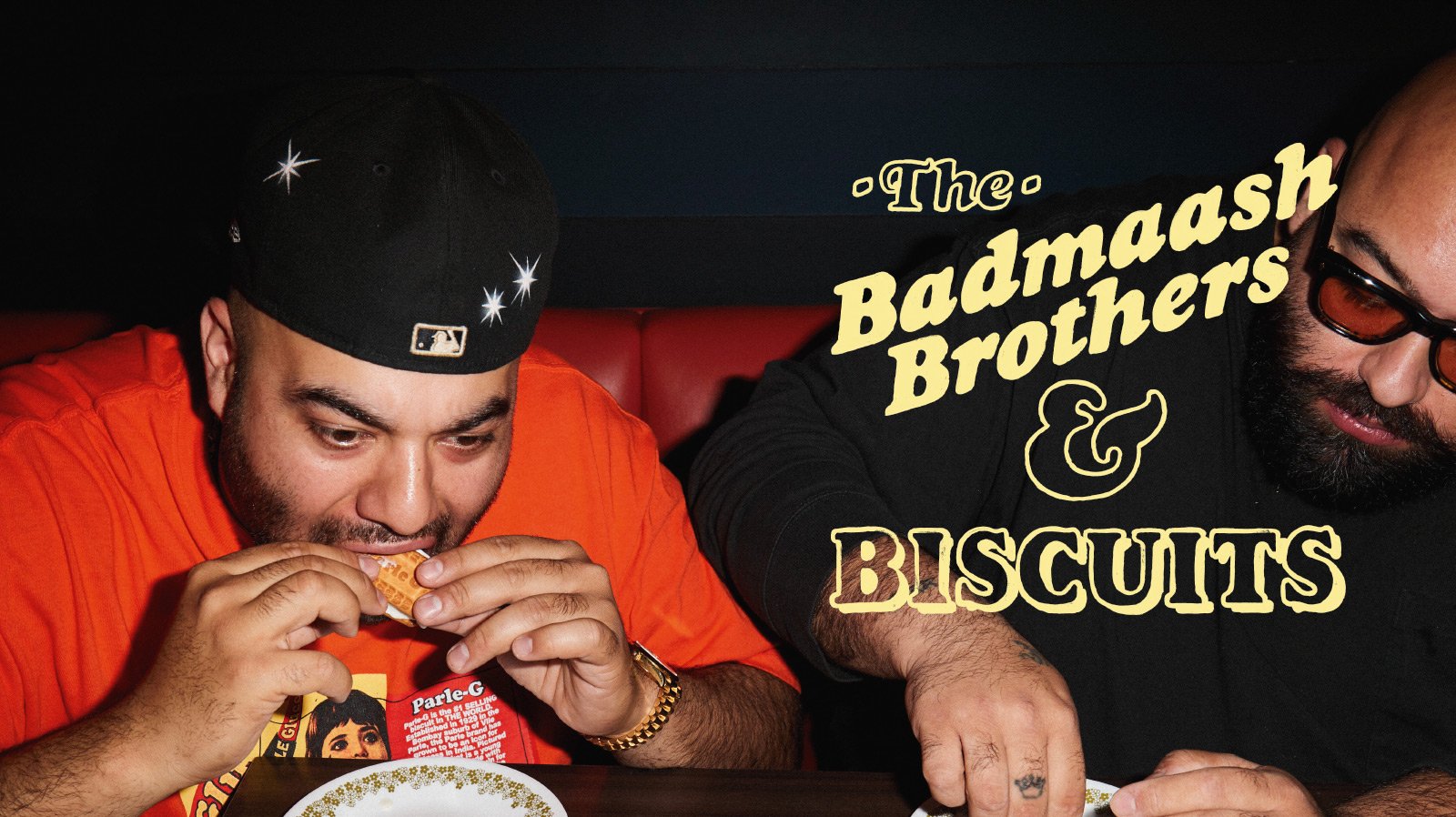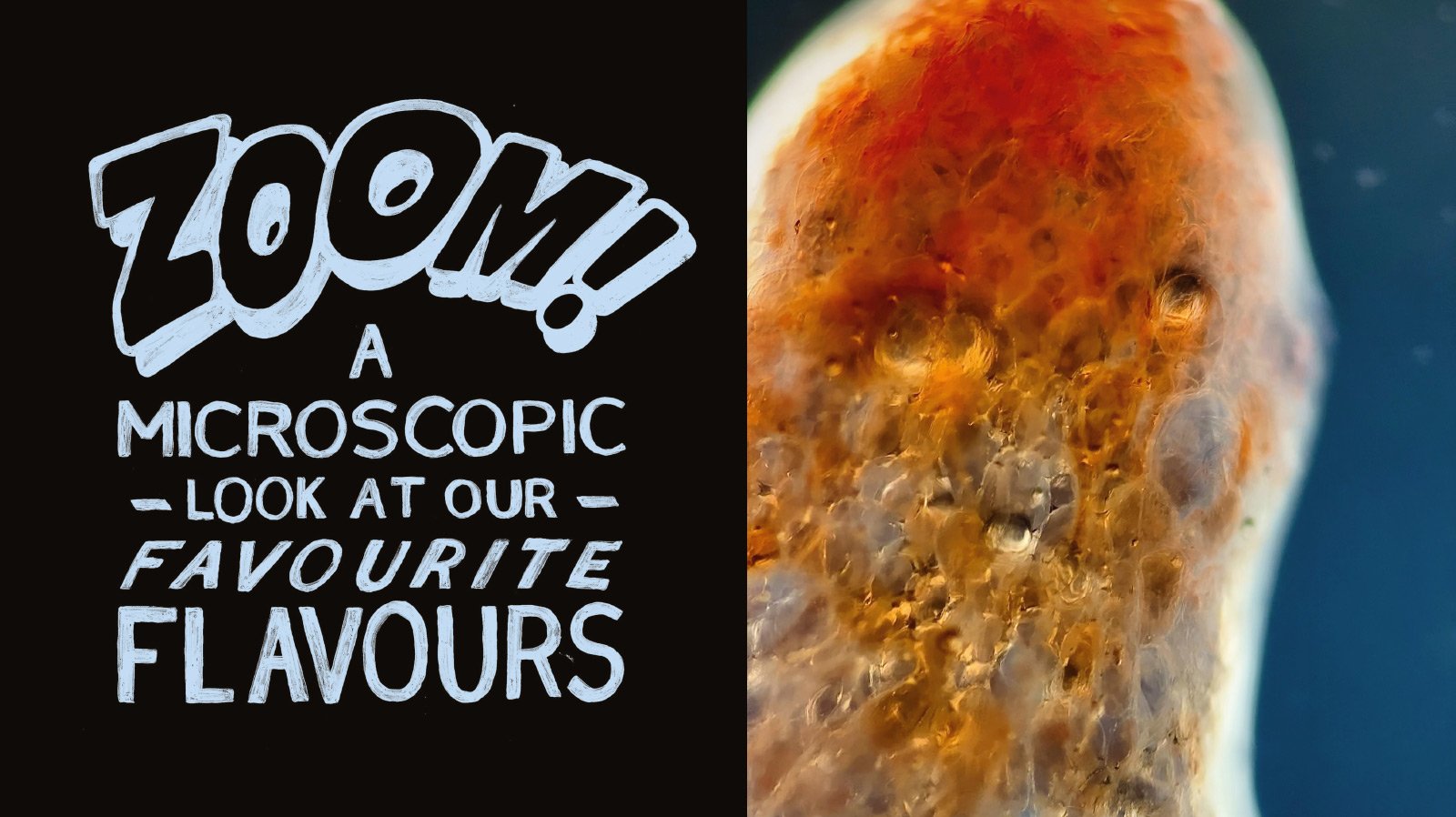The Ice Van Cometh
Words Jimmy McIntosh
Photography Josh Edgoose
Photo Assistant Alex May Hughes
Standing on an industrial estate in Crewe, UK, on a drizzly Thursday afternoon, I was surrounded by a gaudy fleet of ice cream vans. I’d come to the Cheshire factory of Whitby Morrison, the world-leading ice cream van manufacturers, to find out about their rich and creamy history; what special processes go into the construction of their vehicles; and what the future holds for the likes of Mr Whippy, Mister Softee, Mr Giuseppe, and all the other titular lolly merchants peddling their wares from Inverness to the Isle of Wight and beyond (of which there are an estimated 5,000 currently in operation). Ice cream is a serious business here. The ’99 Flake is a way of life.
Since my late teens, I’d never really given much consideration to the humble ice cream van – beyond those half-forgotten childhood memories of roaming the hot suburban tarmac on summer evenings, the tinny toy box chimes of ‘Greensleeves’ or ‘O sole mio’ echoing through the privets from a neighbouring cul-de-sac; a siren song to every bored and sugar-starved kid in a four-street radius. But like creepy, anthropomorphic cartoon shows or The Beano, just because you’re older and more interested in Axel Arigato or French cinema or accounting, doesn’t mean that these lurid childhood totems aren’t still as ubiquitous and popular as they were in your youth. And chances are, if you’re hearing a distant snippet of ‘Teddy Bear’s Picnic’ in 2023, it’s coming from a Whitby Morrison van.
Formed by Bryan Whitby in 1962 as Bryan Whitby Engineering, Whitby Morrison has grown to become the ice cream van manufacturer, shifting high-quality units as well as changing the way the whole industry operates. This lust for innovation has been at the forefront of the business since its early days under Bryan, who pioneered the now-standard Direct Drive System (DDS). Prior to DDS’s invention, ice cream vans needed an external generator or electricity source to power the soft-serve ice cream machine – that’s the ‘99 machine to gelato plebs like you and me. But with Whitby’s new system, the van’s own engine powers the machinery – to the sweet tune of 600 cones in
a single hour, which is a hell of a lot of ice cream.
The 1980s saw the company acquire the southern England-based manufacturer Morrison from Robin Hood, merging the two van giants into one company and taking effective control over the whole of the country’s fleet. The 1990s saw yet another major innovation, as Whitby Morrison became the sole distributor of Carpigiani machines. Carpigiani are sort of like the Fender guitars of soft-serve ice cream machines, a byword for high quality and performance since their inception in Bologna in 1944. They’ve even got their own gelato university where, for the ice-cool sum of £599, you can become fully qualified in the art of the ice cream.
Ed Whitby, the grandson of Bryan and son of managing director Stuart, kindly agreed to take Sandwich Magazine on a tour of the Whitby Morrison factory, to show us how each van is made and to get a flavour of what the day-to-day life is like on the frontlines of Softee engineering. Each van is, somewhat surprisingly considering the amount they churn out, custom made, with different specifications for different clients’ needs. As I walked out into the open yard between the two main factory buildings, my eyes were immediately drawn to a massive, vintage Chevrolet van; a bespoke piece designed for a local low-fat cheese company. “It came as a completely empty van,” Ed says, adding that it was “rough as anything” before the crew got their hands on it and kitted out the interior. This isn’t Whitby Morrison’s usual way of operating: “Typically, we’ll get a Mercedes Sprinter chassis in, and then add custom-built fibreglass bodies to them.” It was the fibreglass resin casting section of the factory that we entered first. What hits you initially is the smell, a strong, plasticky stench that wafts out of the open double doors into the Cheshire air. And then you see the mess. Flecks of white covered almost every surface, from floor to hard-working employee; a Jackson Pollock reima-gined with a tub of hazardous raspberry ripple. But it’s organised chaos – when finished, the truck moulds are lifted onto the Sprinter chassis, and the platonic form of an ice cream van begins to take shape.
From there, it’s a case of bringing it all together. The internal fridges – built onsite by Whitby Morrison – are lifted in. The formica tabletops are secured. The Carpigiani machine, the jewel in any van’s crown, is installed, along with any electrics. Over to the paint shop, where the base colours are spray-painted on, and where those knock-off Disney characters so beloved by ice cream men are hand-drawn (“We just do what the customer asks us to do”, was the response when I asked about potential copyright issues). What’s immediately obvious in the spacious, open-plan workshop that employs nearly 50 people, is just how colla-borative it all is. With around 25 different vans being worked on at any one time, it’s a living and breathing production line, where everyone helps each other out and opinions on design and production are freely shared: “It brings me a great sense of pride,” says Ed. “Every van that goes out the door will have had every pair of hands in here touch it at some point.” Unsur-prisingly, with a business this tightly-knit, family plays a big role. As we walk around from station to station, Ed points out the gener-ational connections with each worker. His dad ran the paint shop for thirty years. Over to the next workspace. Tommy runs the fibreglass shop, and his son Tim works here too. To the paint shop. Martin over there, his dad retired last year, and his nan used to make the fibreglass bodies.
“After lockdown, people thought, ‘bloody hell, I quite like having an ice cream van coming down my street.”
The pandemic was, strangely, quite kind to the ice cream business. “The lockdown periods helped massively for the street trade. It was like a resurgence of the old days,” Ed explains. “After lockdown, people thought, ‘bloody hell, I quite like having an ice cream van coming down my street’, so they’ve continued to do really well.” And then, as the country slowly returned to normal, all the events came back: “the other side of the business started to boom. It’s the best time to invest in an ice cream van.”
But beyond selling vans, Ed’s goal is to put Crewe on the map: “There’s Bentley Motors, on the other side of Crewe. You’ve got the railway industry that founded the town; there’s a big cereal business, Mornflake – they’ve been here for 450 years,” explains Ed. “But hang on, the majority of the world’s – not just the UK’s – ice cream vans come from here, so let’s shout about it.” And why not? The visual language of the ice cream van is well known: from the bold, primary colours, to the light-up ice cream cones, to the hand-painted images of Mickey Mouse, Donald Duck and co. that play fast and loose with copyright laws – it’s familiar; it’s safe; and in a kitschy, maximalist way, it’s really quite cool. It’s an art form. And Crewe being the home of it all is something Ed is particularly proud of, as a local. Whitby Morrison works with nearby schools through apprenticeship schemes. They sponsor a stand at Crewe Alexandra Football Club’s stadium. They bring people from the local community together. It’s not just a business, it’s a family.
Ed had saved the best until last on our whistle-stop tour of the world’s premier ice cream van workshop. Two roads away, in an unsuspecting storage unit nestled between a wholesale pie manufacturer and a hair and beauty warehouse, was Whitby Morrison’s ace in the hole; their ticket to cementing Crewe as the home of the ice cream van: a small aircraft hangar’s worth of classic models. Walking in, the scope of what Ed and the team have on their hands here becomes apparent. Mustard and red Lyons Maid trucks that look more like the popemobile; sky-blue Wall’s vans that look like wacky funeral hearses; one that has a terrifying, giant head of Uncle Sam built into the back; vintage vehicles of all shapes and sizes, showing just how far the ice cream truck has come in its relatively short history. Ed’s plan, is to one day open a museum, charting the evolution of the van from its horse-drawn days to modernity, as fully electric vehicles become the norm.
He’s clearly got big plans to take Whitby Morrison from industry legends to household names. He’s set up a company TikTok account, got them a BBC documentary, and started the company selling all manner of merchandise, from beanie hats to espresso cups. “You should always do the very best you can, regardless of what it is. Then you know you couldn’t have done any more,” Ed tells me as we wrap up for the day and head to the train station. What was clear from my time at Whitby Morrison is that they really are doing the very best, with a team that cares passionately about their craft. Wel-come to Crewe, home of the ice cream van.







